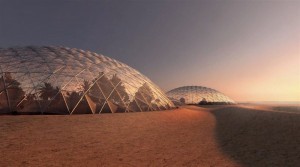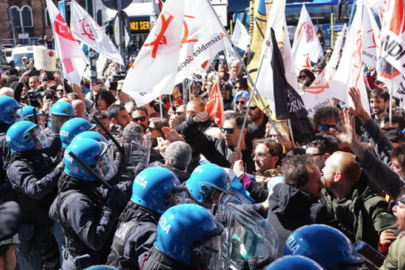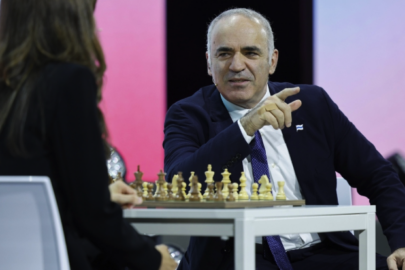Indoor ski resorts. Underwater hotel suites. Cloud-brushing mega-skyscrapers. High-end shopping malls the size of 50 football fields. Leave it to the United Arab Emirates, land of superlative everything, to lead the charge when building the world’s largest — and, predictably, flashiest — Mars colony simulation.
When complete, the 1.9-million-square-foot Martian mini-city will give scientists a “viable and realistic” taste of what human colonization of the Red Planet might be like.

News of the so-called Mars Science City, which comes equipped with a price tag of $140 million (U.S.) and will be located in the Emirati desert on the outskirts of Dubai, comes just months after the country announced ambitious and not entirely surprising plans to colonize Mars by the year 2117.
Considering the Emirates’ vast wealth and penchant for erecting seemingly impossible structures at a breakneck pace, the colonization of Mars by the UAE certainly isn’t all that implausible. After all, Dubai, which is hyper-futuristic and located in an incredibly harsh climate, essentially already is a city-state imported from outer space.
If all goes as planned, an Emirates-led international team of scientists and engineers will have figured out how to merrily accommodate upwards of 600,000 erstwhile Earth dwellers in a self-sustaining settlement located some 34 million miles from home. It’s a daunting task to be sure but not to worry — they’ve got 100 years to iron out the details. Colonies aside, the logistics behind the actual journey itself is substantial as it could take intrepid colonists up to nine months to reach their new Mars-bound digs. (As part of a separate space endeavor dubbed Emirates Mars Mission, the UAE government plans to send an unmanned probe to Mars by 2020.)
“The landing of people on other planets has been a longtime dream for humans. Our aim is that the UAE will spearhead international efforts to make this dream a reality,” proclaimed Sheikh Mohammed bin Rashid Al Maktoum, the prime minister and vice-president of the UAE and ruler of the Emirate of Dubai, during the launch of the Mars 2117 Project in February. “The new project is a seed that we plant today, and we expect future generations to reap the benefits, driven by its passion to learn to unveil a new knowledge.”
If the Mars 2117 Project is the “seed” of the Emirates’ long-term ambitions to establish a habitable pied-à-terre on the surface of Mars, then the unveiling of Mars Science City is a clear indication that the UAE has started the gardening process with full gusto.

Spread out across multiple climate-controlled domes, the sprawling simulation — the Emirates News Agency is already touting it as “the most sophisticated building in the world” — will include laboratories dedicated to energy, water and food production as well as zones that accurately replicate conditions on the surface of Mars. What’s more, a dedicated team will live within the colony for an entire year as part of an “experiential element” that aims to “form an important reference model for future innovation around sustaining life in a hostile planetary environment.”
And although the UAE has its sights firmly set on the Red Planet, those involved with this multinational collaborative initiative — the “best scientific minds from around the world” per the Emirates News Agency — also will be keen on addressing pressing issues back home including “global challenges such as food, water and energy security.” Hey, sometimes you have to figure out how to populate a dust-swept, butterscotch-colored orb named after the Roman god of war in order to figure out how to better live on planet Earth.
“The UAE is a great country with vision and understanding of the challenges we face and the rapid changes our world is experiencing,” says Sheikh Mohammed bin Rashid. “We believe in the potential of space exploration, and in collaborating with global partners and leaders in order to harness the findings of this research and movement that seeks to meet people’s needs and improve quality of life on Earth.”

Considering that this is the UAE (aka ground zero for off-the-wall tourist attractions), Mars Science City wouldn’t be complete without areas accessible to the general public. One open-to-visitors highlight comes in the form of an interactive space museum complete with walls that have been 3-D-printed using sand collected from the Emirati desert. The concept of 3-D printing human settlements on Mars using indigenous materials like soil and dust has been floating around for some time now— a test-run pairing similar technology with local sand seems like the logical first step.
As for the massive structure itself, its preliminary design comes courtesy of BIG, the namesake firm of lauded Danish architect Bjarke Ingels, which is working with the Mohammed bin Rashid Space Centre and Dubai Municipality on the project.
This sounds about right considering BIG’s audacious creations, from tetrahedron apartment complexes to power plants with skiable roofs, all take on a playful, otherworldly quality. They swoop, they swirl, they spiral, they shatter architectural conventions and, sometimes, they look like they come from outer space. A huge multi-domed complex that, to quote Sheikh Mohammed bin Rashid, is dedicated to advancing “humanity’s march into space” fits snugly into Ingels’ own brilliant and fantastical oeuvre. A mock Martian colony also seems right at home among the futuristic landscape of Dubai, a city where skyline already reaches impatiently into the heavens.
source: mnn.com


































